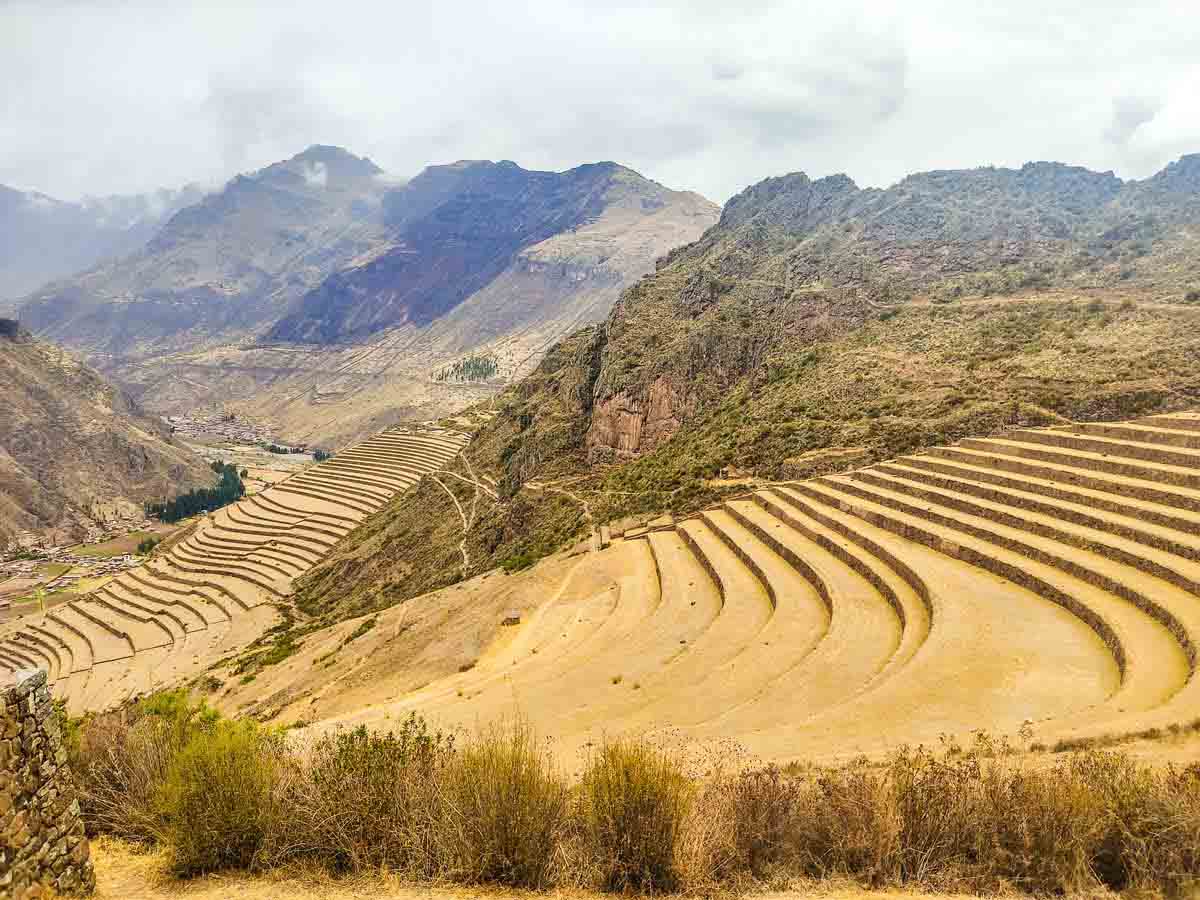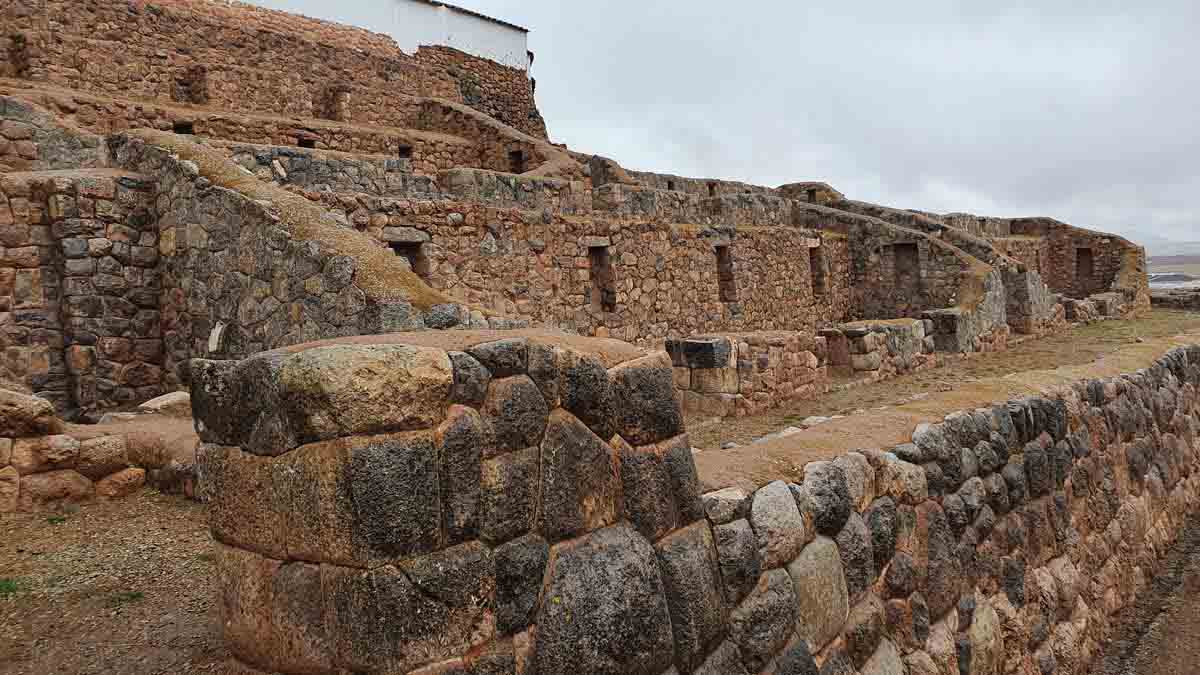
The Sacred Valley Cusco has become in recent years, one of the most important destinations in South America, in the valley of the Urubamba River, and is known worldwide as the Sacred Valley of the Incas.
With the river feeding the valley, its fertile lands were one of the main centers of food production during the time of the Incas; Some places, such as Moray, were used as agricultural laboratories to experiment with plant species brought from all over the empire. The Incas cultivated, potatoes, white corn, coca, fruits, and vegetables, in terraces like those that can be seen in many valley towns designed especially for this purpose. Currently, the valley produces lucuma, peach, avocado, and one of the best grains of corn in the world.
The Sacred Valley altitude is 2,800 masl, 600 meters below Cusco, and enjoys one of the best climates in this region, temperatures during the day vary between 19 ° and 24 ° C. This privileged climate made the Incas take it as their main center of production, experimentation, and agricultural research. Nowadays, travelers use the valley to acclimatize, before starting their tours through Cusco and Machu Picchu, and without a doubt one of the best ways to avoid altitude sickness.
The town of Pisac is located 33 kilometers from the city of Cusco and at an altitude of 2980 masl. It is presented as the gateway to the Sacred Valley Cusco, it is world-famous for its craft market and its impressive archaeological remains, located on a mountain above the town. This town was a kind of capital of the region in the time of the Incas, very important for its excellent location and fertile land. The Inca and colonial constructions that are exhibited in its territory are admirable for their great invoice and for the platforms that surround the mountains and polished stone structures, assembled to perfection.

Located at an altitude of 2870 masl. Urubamba is one of the most important cities of the valley at present, it is a city that was born during the colony and is considered the world capital of corn. This is possible because it is watered by numerous rivers that are born in the peaks of the glacier mountains; all the Urubamba valley territory was very appreciated by the Incas due to the fertility of their lands and the great qualities for cultivation.
Ollantaytambo, also known as Ollanta, is located 97 km northwest of the city of Cusco; approximately 2 hours and 30 minutes by car. It has an altitude of 2850 masl. It was during the time of the Incas a fortified city, with temples, urban, agricultural sectors, and walls of defense. It is known that the Inca city of Ollantaytambo served as an administrative control post. After the Spanish invasion, it became one of the favorite places of the viceroys. It is considered one of the most important archaeological sites in Peru and South America. In addition, many people consider that after Machu Picchu ruins, the town and the ruins of Ollantaytambo contain the most impressive Inca stonework in Peru; however, it is not the only amazing thing about this place. Only a few years ago, the global positioning systems allowed us to discover that Ollantaytambo is aligned with other ancient constructions throughout the world; the pyramids of Giza, the islands of Pascua, and the Nazca lines are just some of them; In addition, the most important archaeological remains from all over the world are aligned around this line.

On a normal tour of the Sacred Valley of the Incas, the town of Chinchero will be the one you will visit after traveling through most of the valley, back to Cusco; It is located 28 km from the city of Cusco to 3,772 masl and has important archaeological sites, a beautiful colonial church of the seventeenth century with canvases of the "Cuzqueña School", and a typical market where you can still carry out barter.

Maras is a small town located west of Cusco, Peru. It is 3300 masl, on a plain. You can reach the town of Maras from the city of Urubamba; to the northeast of this you will find the "Salt Mines". You will be able to see more than 5,000 salt extraction ponds, built in the time of the Incas, taking advantage of a saline water spring and the slope of the Qaqawiñay mountain. By far the pools give the impression of being full of snow. In dry seasons, these wells are filled every 3 days with the salt water that emanates from the meant over the wells, and when evaporated, the salt crystallizes and gradually solidifies. This process continues approximately for 30 days until obtaining a considerable amount of solid salt, approximately 10 centimeters high from the bottom. The Salinas de Maras is one of the 4 places in the world where you can get pink salt. Take a bag with you.
The town of Moray has located 74 km from the city of Cusco, with an altitude of 3,385 masl; It houses another of the impressive constructions of the Inca. It is a series of concentric circular bowl-shaped platforms that give the feeling of being an artificial crater. Moray Sacred Valley was one of the main "centers of agricultural research of the Inca Empire", dedicated to the experimentation and planting of crops from different parts of the empire. The different climates and altitudinal floors vary in temperature by approximately 20 ° C (from the first to the last), they were built to make it possible to plant products from the coast and jungle in colder climates and higher. The platforms are arranged in such a way that each of the terraces produces a very particular microclimate. You can get to this agricultural laboratory of the Incas mounted on Peruvian Paso horses.
The Sacred Valley Peru tour will take you through a markedly traditional route, you will meet Quechua-speaking residents, wearing traditional costumes, and traditionally working your fields; It will pass through villages built during colonial times, by ancient Inca settlements; It will travel through markets, temples and city squares that took it a few hundred years ago, in the middle of a valley that was sacred to the Incas. However, to visit the main archaeological remains of the Sacred Valley, you will need to buy the Cusco tourist ticket.
